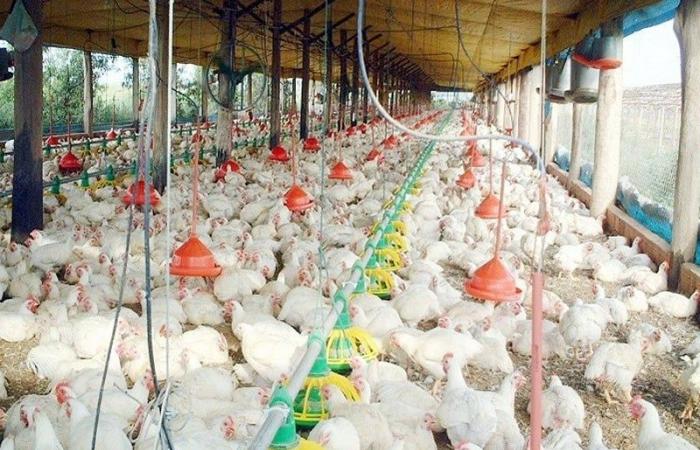After reaching record highs during the period following Eid al-Adha, poultry prices at the national level have regained a certain stability, with the price per kilogram oscillating between 17 and 18 dirhams. Professionals in the poultry sector attribute this drop to a reduction in demand as well as the drop in temperatures, which had affected chicken production during the summer. They also believe that this downward trend could continue in the months to come.
Many citizens complained, throughout the summer, of the “skyrocketing prices” of poultry, and chicken in particular, calling on the Ministry of Agriculture to intervene to regulate the prices of this source of protein. basic, essential in Moroccan homes.
However, one person’s happiness makes another person’s misfortune. For professionals, this drop could bring considerable damage to their pockets. Approached by Hespress FR, Builder of the Moroccan association of poultry meat producers (AMPC) points out a situation which is becoming more and more unsustainable, not only because of price fluctuations, but also because of the distribution “unfair costs that weigh heavily on our shoulders”. Explaining the conditions, he shares with us: “First of all, it is important to emphasize that all taxes are borne by the breeder. We have seen, for example, that the price of a chick which previously cost between 4 and 5 dirhams, is now sold at 10 dirhams for those with agreements with henhouses, and up to 13 or 14 dirhams for those which are supplied on the black market. And I’m only talking about chicks here. We haven’t even touched on the costs of feed, water, and other livestock-related expenses yet”.
While in other sectors around the world, the basic elements are experiencing a decline, here, nothing seems to change, our interlocutor is indignant, noting that “we don’t know why, but it is obvious that there is no one to carry our voice or defend our interests. The factories, for their part, have not provided any reduction in our costs. This stagnation directly affects the breeder, who has had to bear high costs since the COVID-19 pandemic.”.
In addition to the health crisis, water stress exacerbates the situation: “ wells are drying up, forcing herders to buy water at ever higher prices. As a reminder, the normal price of a chick should be around 3 dirhams, but today, it is sold to us for 14 dirhams. Why such a difference? We are faced with the greed of the factories, which continue to take advantage of the situation to the detriment of the breeder. This price difference falls directly on us, thus aggravating our economic difficulties.”, he adds.
And that’s not all. Recounting the suffering faced by breeders, Boubker indicates that “our poultry is constantly threatened by viruses such as avian plague. Despite health challenges that increase costs, we have no support”. The recent drop in prices is certainly good news for consumers, but it is essential to understand that it is the breeder who pays the high price.
And to add: Today, “we sell our chickens for 13 or 14 dirhams, without any support from the state. Even the reduction in VAT on poultry feed benefited factories and companies, but no benefits were given to breeders”.
Faced with this situation, concludes the professional and member of the AMPC, “we urge the State and the competent authorities to take into consideration the difficulties we are encountering”. “It is crucial to re-evaluate the system of subsidies and protection of our sector. We need to be heard because a thriving poultry sector is not only essential for our survival, but also to ensure food security for the entire country”, he reiterates.






